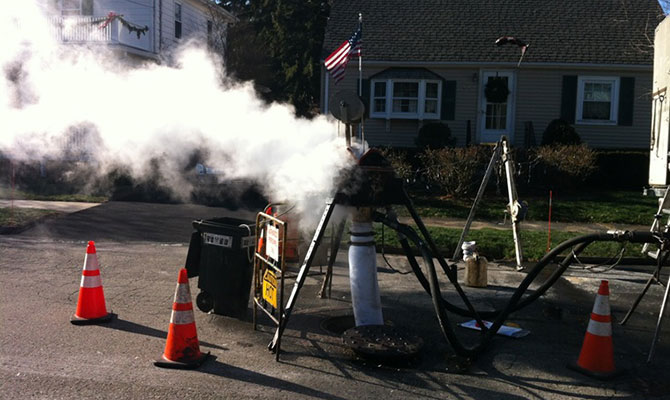In comparison to other parts of the U.S., the Northeast typically has older communities and higher groundwater. When infrastructure ages, more groundwater can infiltrate collection systems through defects in pipes, joints, connections, or manhole walls. The city of Beverly, Massachusetts, has been addressing these types of problems within its aging sewer system for the past 10 years, hoping to improve resilience, especially during rainstorms.
"Once in a Lifetime" Storm
In May of 2006, Beverly, and much of eastern Massachusetts, was hit with more than 17 inches of rainfall in a three-day span. This large amount of rain, dubbed the "Mother's Day Storm," created problems throughout the city, but especially in the Hurd Stadium neighborhood. Sewer backups, street flooding, and basement flooding were prevalent due to inflow and rainfall-induced infiltration.
Following that historic storm, the city decided to examine the characteristics of the catchment area by initiating long-term flow monitoring and field activities. In 2007, all sanitary sewer and storm drain manholes were inspected, nighttime flow isolation of nearly 26,000 linear feet of individual pipe segments was conducted, and select houses were inspected. Over a period of several years, pre-construction flow data and field conditions were collected to compare to post-construction flow data.
Utilizing Data to Develop a Plan
The data collection, evaluation, and assessment of the sewershed led to the preliminary and detailed design for rehabilitation. The contract documents for the sewer rehabilitation work addressed structural repairs to the sewer mains and sewer service laterals, public notifications, materials to be used, curing methods, inspection and monitoring requirements, pre- and post-closed circuit television (CCTV) inspections, and contingencies for problems arising during construction. The rehabilitation plan utilized trenchless technology to rehabilitate the small diameter residential system for cleaning, CCTV, cured-in-place piping main lining, manhole repair and lining, and epoxy lateral lining. Currently, about 20,000 linear feet of sewer pipe and 400 house service laterals have all been cleaned and inspected. Of that, 13,000 linear feet of sewer mains and 162 house service laterals have been rehabilitated using cured-in-place pipe liners. Using this method minimizes disruption to the traveling public, limits homeowner inconvenience, and is the most cost effective rehabilitation method.
 Cured-in-place piping main lining.
Cured-in-place piping main lining.
Construction originally began in the fall of 2015 and is ongoing, with a goal of final warrantee inspection in the spring of 2017. When complete, our analysis will include the pre-construction versus post-construction flow data, along with a cost-benefit analysis of the total construction cost spent by the city. The improvements in this successful sewer system rehabilitation project should lead to a quantifiable reduction of infiltration and inflow, improving the quality of life for residents. Beverly views this project as an important asset management effort for a critical piece of its infrastructure.